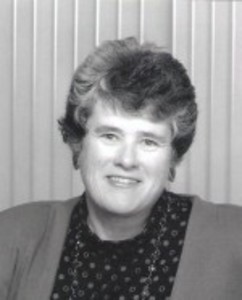When I was diagnosed with endometriosis in 1969, I had spent 17 years in pain, and had been hospitalized many times, all without a diagnosis. I was subjected to multiple scoldings from medical personnel who claimed that pelvic exams shouldn’t hurt, even as I tried to leave the exam table with the ratcheted speculum still in place. They also dismissed me psychologically by saying “it’s just her period”. Today, 44 years later, instead of prompt diagnosis and prompt treatment, it takes an average of 9 years for women to receive an accurate diagnosis. That’s 9 years of negligence, of severe pelvic pain and psychological dismissal. We have not come very far at all.
Making things worse, some in the medical community are advocating that “minimal” disease does not need any treatment. After all, it’s only minimal disease, right? Well any endometriosis lesion, no matter the size, can cause significant inflammation of the lining of the pelvis (the peritoneum). Try living with a couple of grains of sand in your eye for a lifetime. It causes the same kind of inflammatory response. This approach to endometriosis care is outrageous; the attitude of “there is not enough money to treat all 180,000,000 women worldwide” for their endometriosis verges on misogynistic. Let me tell you, if 180 million men worldwide reported unbearable pain during sex, bowel movements and exercise, and they were offered feminizing hormones, surgical castration or pregnancy as treatment options, it would cause an international emergency and countries would transfer their combined defense budgets in order to find a cure.
The peritoneum is the thin, Saran™ wrap-like lining of the pelvic cavity and the organs. Its role is primarily protective. If there is blunt abdominal trauma, infection, appendicitis, or leaking organs it reacts swiftly and predictably: the patient experiences bloating, intense abdominal pain, nausea, paleness, restlessness, anxiety (recognize those symptoms do you?). Every medical and nursing student on the planet has been taught to recognize these symptoms and respond quickly. A differential diagnosis must be made promptly and the peritoneal-quality pain treated with pain medication. In women with endometriosis the medical community somehow dismisses the intensity of her pain with the assessment: “oh, it’s just her period”. It is outrageous that patients presenting with peritoneal-quality pain are ignored in both the emergency room, and in private practice, and the patients’ pain is not treated.
If caregivers do not have the skill or interest in excising endometriosis, they should at least treat the pain. Endometriosis pain is as intense as appendicitis; I know because I have had both. Or better yet, caregivers could refer the patient to someone who can remove disease effectively. On the endometriosis boards on Facebook, etc. (where thousands of desperate women with endometriosis gather) we have identified less than 100 gynecological surgeons out of 52,000 in the USA who treat disease effectively. And yet most gynecologists believe they can treat this disease effectively. Treating effectively means permanent relief of pain in one or two surgeries. Drugs do not treat endometriosis; they alter a woman’s normal hormonal.
Once, when giving a lecture on “Modern Concepts in Endometriosis” I was confronted during the intermission by two surgeons. These surgeons said surgery was not necessary to treat endometriosis. They claimed they were “curing” their patients with triple dose danazol and then they stormed from the room. After intermission, when I resumed my lecture, the crowd wanted to know what the surgeons had said. I said that the surgeons claimed they were “curing” endometriosis with danazol. I wondered aloud why the surgeons would think that. The nearly 100 women in the room shouted almost in unison, “Because we don’t go back”. So if caregivers are thinking they are helping their patients with medical therapy, perhaps they are not listening closely enough, or their patients are not coming back.
In the 1980s when I was managing the Endometriosis Treatment Program at St. Charles Medical Center in Bend Oregon, we saw patients from around the world. All of these patients had multiple treatment failures, both surgical and medical. Seventy-five percent of the patients had been dismissed as “neurotic”. All of these patients had active, painful endometriosis which was determined by independent, board certified, pathologists. Today, I still hear from woman after woman who has been told to seek psychological help because she doesn’t have any disease. And yet when we get her into the hands of a doctor who performs advanced excision surgery, she has confirmed, active endometriosis and she experiences dramatic, long-lasting relief.
Women with endometriosis live lives of quiet desperation. They have learned to be quiet because most doctors do not believe the quality and severity of their pain. Their support systems often abandon them because doctors find nothing wrong. Yet these women present with peritoneal signs and symptoms. Will the medical community continue to turn a blind eye to these women? Or can the medical community find the necessary compassion for their plight? If the medical community cannot surgically resolve their disease, could they at least consider referring these women to someone who can? Or can we refer these patients to a pain management program? Multiple peer-reviewed studies prove that patients taking narcotic pain medication do not become addicted to their pain medication. They may become dependent, but at least they will be able to get up off the couch, put the heating pad away and resume living their lives. Endometriosis is not a terminal disease, but despair can be terminal, and women with endometriosis experiencing despair have paid the ultimate price. I know of many women with endometriosis who felt there was no other way out; and even one is simply too many.
It is unacceptable to continue to expect women to cope with peritoneal-quality disease on their own, without help, and without relief. We need surgeons who are trained to surgically deal with lower stage disease wherever it is located. We need referral centers for women with complex, deeply-infiltrating disease. Hysterectomies do not cure endometriosis. There are thousands of us that were fooled into believing that a hysterectomy is a cure. The medical community cannot continue to ignore our plight. The medical community is either part of the problem, or part of the solution. There is a significant body of data that shows that excision of endometriosis lesions restores lives. How long will the medical continue to ignore that?
One of my heroes is Sister Kenny, an Australian Nurse who developed physical therapy for the acute effects of polio. Her therapy and hot woolen packs prevented joint fusion and relieved pain. She was soundly trounced worldwide by orthopedic experts caring for polio patients for years. Gradually, there was recognition that she was right. When asked why she thought it took so long for others to see that suffering could be ended with simple changes in care, she responded: “When we speak with the voice of authority, we come to believe we are the authority”. When I read that, I thought, yes, despite evidence to the contrary. Well, there is evidence, plenty of it that skilled excision restores lives.
Finally, Margaret Mead is a hero of mine. She was a cultural anthropologist from the 20th century. She said: “Never doubt that a small group of thoughtful, committed people can change the world. Indeed, it is the only thing that ever has.” Be that small group (180 million worldwide) that changes the world for women with endometriosis. Work with gynecologists everywhere to raise awareness of just how much this disease impacts lives. Let them know just how inadequate many approaches are. Let them know that surgical management of endometriosis is truly effective. This approach gives women back their lives, their sexuality, their education track, their fertility, their love of life. It gets women up off the couch, and allows them to turn off their heating pads. It is time to stop ignoring the destructive impact this disease has on women’s lives, the lives of their families, spouses, significant others. Actually, it’s way past time.
Nancy Petersen R.N. (Retired) — Co-founder of the Endometriosis Treatment Program at St Charles Medical Center in Bend, Oregon











I have just come upon this post. When I was in practice, a young lady came to see me for her endometriosis. Surgery had been scheduled. This is an inflammatory disease caused by an imbalance in a complex system known as the prostaglandin cascade. I gave her nutrients that included 1 part gamma linolenic acid (GLA) to 8 parts eicosapentoic acid (EPA also known as fish oil).Taken by mouth, she cancelled surgery . These are representatives of the omega 6 and omega 3 fatty acids. They are normal metabolites made in the body from 2 fatty acids that are essential as nutrients and known as vitamin F. An enzyme that requires several vitamins is responsible for converting vitamin F to GLA and EPA. This enzyme is inactive in endometriosis because it lacks the cofactors
Nancy I just want to tell you how much I have appreciated everything you do for Endo for all these years. You have been an inspiration for me as well as so many other Endosisters. You are apart of the foundation that has helped us get to this point that we are at right now and all I can say is thank you for all the time you have dedicated for this disease and for sharing your story and struggles.